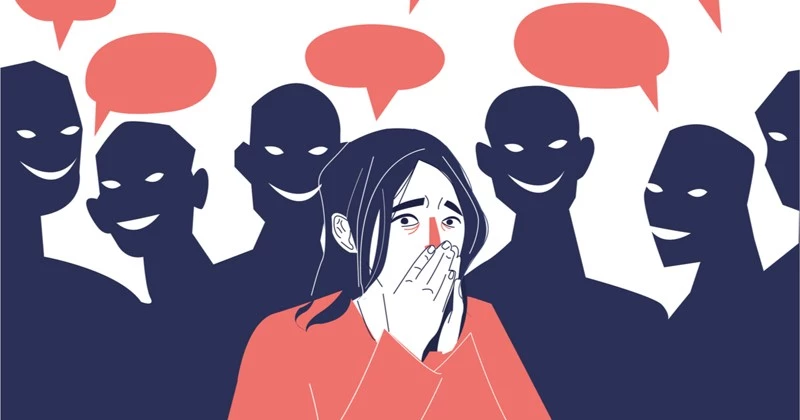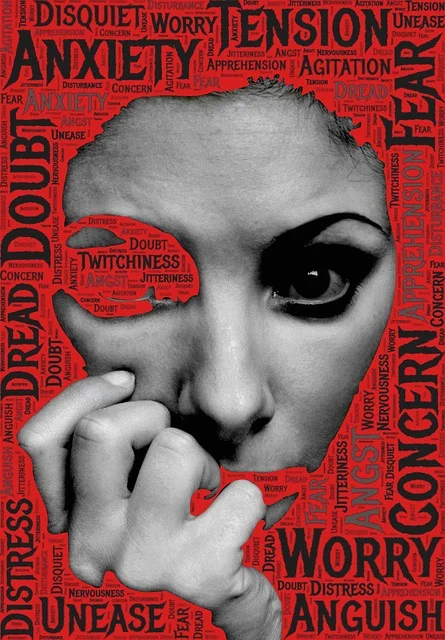Social anxiety disorder (SAD), also referred to as social phobia, is one of the most prevalent anxiety disorders that significantly affects adolescents during a crucial stage of psychological and social development. According to the DSM-5 (Diagnostic and Statistical Manual of Mental Disorders, Fifth Edition), social anxiety disorder is defined as an intense and persistent fear of social or performance situations in which an individual might be exposed to possible scrutiny or negative evaluation by others. In adolescents, this fear often manifests as extreme self-consciousness, avoidance of peer interactions, and difficulty participating in social, academic, or extracurricular settings.

Adolescence represents a developmental period marked by increased social demands, identity exploration, and peer influence. These factors heighten vulnerability to social evaluation, making this age group particularly susceptible to social anxiety. While mild shyness is a common temperament trait, social anxiety disorder extends far beyond simple nervousness. It interferes significantly with educational achievement, family relationships, and emotional well-being, often leading to isolation, academic underperformance, and low self-esteem.
Globally, the lifetime prevalence of social anxiety disorder among adolescents ranges between 7% and 13%. The onset typically occurs in early to mid-adolescence, with a slightly higher prevalence in females. Early detection and appropriate intervention are essential to prevent chronicity and the development of comorbid conditions such as depression or substance abuse.
Signs and Symptoms of Social Anxiety in Teenagers
The DSM-5 identifies several key features that characterize social anxiety disorder. In adolescents, these symptoms can appear across emotional, behavioral, and physical dimensions.
Emotional and Behavioral Signs
Adolescents with social anxiety disorder experience persistent fear or anxiety about one or more social situations where they may be judged or embarrassed. Common triggers include public speaking, answering questions in class, eating in front of others, joining group activities, or initiating conversations. This fear often leads to avoidance behaviors — for example, refusing to attend social gatherings, skipping school, or avoiding eye contact.
These adolescents frequently anticipate social interactions with dread, often replaying perceived mistakes long after an event has ended. This cognitive rumination fosters a cycle of self-criticism and negative self-evaluation. They may appear withdrawn, overly compliant, or excessively concerned with others’ opinions, which can mask deeper anxiety.
Physical Symptoms
Social anxiety disorder also presents with pronounced physiological symptoms when exposed to anxiety-provoking situations. These can include blushing, trembling, sweating, nausea, dizziness, shortness of breath, or muscle tension. Such responses are mediated by the body’s autonomic nervous system and can reinforce the adolescent’s fear of visible embarrassment.
Shyness vs. Social Anxiety Disorder
It is essential to differentiate normal shyness from clinically significant social anxiety disorder. Shyness is a common personality trait involving mild discomfort in social settings but does not cause functional impairment. In contrast, social anxiety disorder leads to persistent avoidance, distress, and impaired performance across multiple areas of life. The DSM-5 specifies that symptoms must persist for six months or more and cause clinically significant distress or impairment to warrant diagnosis.
Causes and Risk Factors of Adolescent Social Anxiety
The etiology of social anxiety disorder in adolescents is multifactorial, encompassing biological, psychological, and environmental influences.
Biological and Genetic Influences
Research suggests a heritable component to anxiety disorders. Adolescents with a family history of anxiety or mood disorders are at increased risk. Twin studies indicate that genetic factors account for approximately one-third of the variance in social anxiety vulnerability. Neurobiologically, hyperactivation of the amygdala — the brain’s fear-processing center — contributes to exaggerated responses to perceived social threats. Dysregulation in neurotransmitter systems, particularly serotonin and dopamine, also plays a role in the development and maintenance of anxiety.
Cognitive and Emotional Factors
Cognitive-behavioral theories emphasize the role of distorted thought patterns in perpetuating social anxiety. Adolescents often overestimate the likelihood of negative evaluation and underestimate their ability to cope. They exhibit attentional biases toward perceived threats, such as frowning faces or critical remarks. These maladaptive cognitions create a self-reinforcing cycle of fear and avoidance.
Emotionally, adolescence is a period of heightened self-awareness and identity exploration. Increased sensitivity to social judgment and peer comparison can exacerbate anxiety. Adolescents who internalize perfectionistic standards or experience low self-worth are more vulnerable to developing SAD.
Environmental and Social Triggers
Environmental factors also play a critical role. Overprotective or controlling parenting styles may hinder autonomy, reinforcing dependence and fear of negative evaluation. Conversely, critical or emotionally distant parenting can diminish self-confidence. Peer rejection, bullying, or exposure to social humiliation can serve as precipitating events. The growing influence of social media further intensifies social comparison and fear of judgment, magnifying anxiety symptoms among adolescents.
Social Anxiety Disorder in Adolescents Treatment
Effective treatment for adolescent social anxiety disorder requires an integrative approach combining psychotherapy, psychoeducation, and, when appropriate, pharmacological support.
Cognitive Behavioral Therapy (CBT) and Exposure Therapy
Cognitive Behavioral Therapy (CBT) is the most empirically supported treatment for social anxiety disorder. CBT focuses on identifying and restructuring distorted beliefs about social judgment, while gradually exposing adolescents to feared situations in a controlled manner. Through cognitive restructuring, adolescents learn to challenge catastrophic thinking and replace it with balanced, realistic appraisals.
Exposure therapy — a key component of CBT — involves systematic desensitization to anxiety-provoking situations. The therapist collaborates with the adolescent to create a hierarchy of feared social situations and progressively practices exposure. Over time, this process reduces avoidance behaviors and desensitizes the fear response, promoting confidence and resilience.
Mindfulness-Based and Acceptance Therapies
Mindfulness-based cognitive therapy (MBCT) and Acceptance and Commitment Therapy (ACT) have shown growing evidence in adolescent anxiety management. These approaches help adolescents observe anxious thoughts without judgment, fostering acceptance rather than avoidance. Techniques such as mindfulness meditation, deep breathing, and grounding exercises improve self-awareness and emotional regulation.
Pharmacological Treatment
Pharmacological intervention may be considered for moderate to severe cases or when psychotherapy alone is insufficient. Selective serotonin reuptake inhibitors (SSRIs) such as sertraline and fluoxetine are commonly prescribed and have demonstrated efficacy in reducing anxiety symptoms. Medication should always be monitored by a qualified psychiatrist and paired with psychotherapeutic interventions for long-term stability.
Family Involvement in Treatment
Family participation enhances treatment outcomes. Psychoeducation helps parents understand the nature of social anxiety and avoid reinforcing avoidance behaviors. Parents can support therapy by encouraging gradual exposure and modeling calm, confident interactions. Family-based CBT sessions can further improve communication and reduce anxiety-provoking dynamics.
Social Anxiety Adolescent Worksheets and Coping Tools
Therapeutic worksheets and structured exercises are valuable components of CBT-based interventions. These tools empower adolescents to actively engage in self-reflection and skill-building outside therapy sessions.
CBT Worksheets for Teens
Typical worksheets include thought records, which help adolescents identify negative automatic thoughts, evaluate evidence for and against them, and formulate balanced alternatives. For example, replacing “Everyone will laugh at me if I speak” with “Some people may not notice small mistakes, and I can still express my ideas confidently.”
Journaling and Self-Reflection Exercises
Daily journaling encourages self-expression and helps monitor anxiety triggers and progress. Adolescents can record social situations that provoke fear, rate their anxiety levels, and note coping strategies used. Over time, these records highlight improvement and build self-efficacy.
Mindfulness and Relaxation Activities
Breathing exercises, guided meditation, and progressive muscle relaxation help adolescents manage physiological arousal. Incorporating these techniques into school counseling sessions or daily routines can improve emotional regulation.
Teenage Social Anxiety: Impact and Real-Life Struggles
Social anxiety disorder can significantly affect an adolescent’s psychosocial development. Fear of negative evaluation may lead to avoidance of classroom participation, extracurricular activities, or social events. This isolation reinforces feelings of inferiority and inhibits skill development.
Academically, socially anxious students often experience performance anxiety, procrastination, and concentration difficulties. They may underperform despite strong intellectual abilities. Emotionally, persistent self-criticism and fear of rejection can contribute to depression, loneliness, and low self-esteem.
In severe cases, social anxiety can co-occur with other psychiatric disorders, including generalized anxiety disorder, major depressive disorder, and avoidant personality traits. Early identification and intervention are critical to prevent these long-term complications.
Treating Adolescents with Social Anxiety Disorder in Schools
Schools play a central role in recognizing and addressing social anxiety. Teachers, counselors, and administrators can create environments that reduce stigma and promote inclusion.
Role of Teachers and School Counselors
Educators are often the first to observe avoidance behaviors or academic decline. Training teachers to identify warning signs — such as refusal to present, frequent absences, or social withdrawal — can facilitate timely referral for assessment. School counselors can implement social skills training groups that help students practice communication, assertiveness, and coping strategies in supportive settings.
School-Based Therapy Programs
Integrating CBT-based interventions within the school setting increases accessibility. Group therapy formats encourage peer normalization, helping adolescents realize they are not alone in their struggles. Short-term, school-delivered CBT programs have demonstrated significant improvement in self-esteem and social functioning.
Building a Supportive Classroom Environment
Teachers can foster inclusivity by encouraging cooperative learning, positive feedback, and small-group interactions that gradually build social confidence. Avoiding forced participation and publicly calling on anxious students helps prevent reinforcement of fear. Structured encouragement and empathetic communication go a long way in building trust.
How Parents and Educators Can Help
Parents and educators are crucial partners in supporting adolescents with social anxiety.
Communication and Emotional Support
Open, nonjudgmental communication allows adolescents to express fears without shame. Active listening and validation reduce anxiety by reinforcing a sense of safety. Parents should avoid minimizing or overprotecting; instead, they can encourage gradual social engagement at the teen’s pace.
Encouraging Exposure and Positive Reinforcement
Gradual exposure to feared situations helps desensitize anxiety. Parents and teachers can collaboratively design small, achievable social tasks — such as greeting peers, asking a question in class, or participating in a club. Positive reinforcement for effort, not just success, strengthens motivation.
Creating Positive Social Opportunities
Structured social opportunities, such as volunteering, group sports, or arts programs, can help adolescents develop self-confidence and social competence. Peer mentorship programs also provide valuable models of acceptance and inclusion.
Conclusion: Helping Teens Overcome Social Anxiety
Social anxiety disorder in adolescents is a complex but highly treatable condition. Grounded in DSM-5 diagnostic principles and supported by decades of research, effective interventions such as CBT, exposure therapy, and mindfulness-based strategies can significantly reduce symptoms and improve quality of life. Schools, families, and mental health professionals must work collaboratively to create supportive environments where adolescents feel safe to engage, express, and grow.
By combining early detection, evidence-based treatment, and consistent emotional support, we can empower socially anxious adolescents to build resilience, confidence, and a stronger sense of belonging — essential foundations for a healthy transition into adulthood.



